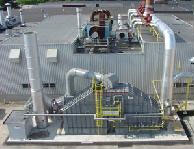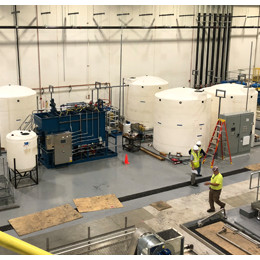The Anguil Advantage
Environmental regulations at metal decorating and packaging facilities are targeted at can makers, base coil coaters, or metal parts and packaging manufacturers; essentially any process where metal is formed, painted, or coated.
The industry has had a long history with compliance regulations for air quality, specifically Volatile Organic Compound (VOC) and Hazardous Air Pollutant (HAP) contro and numerous wastewater issues. Recent changes in air regulations have increased the requirements for capture and control of VOC/HAP emissions from metal decorating processes like ovens and dryers. VOC and HAP abatement has historically been achieved with traditional oxidizer technologies that easily destroy 99% plus of the harmful emissions. The challenges posed by recent regulations have altered the way Anguil addresses your application, focusing on emission reduction via a capture system in conjunction with the pollution control device.
Traditionally, Thermal Recuperative Oxidizers have been employed due to their ability to handle high temperature, pollutant-laden oven exhaust and to recover heat which can be reused in ovens or other process equipment. However, the fuel-efficient Regenerative Thermal Oxidizer (RTO) is taking over as the preferred oxidation technology. Anguil’s broad portfolio of unbiased solutions allows our engineers to make the best choice for your application.
Besides the particular thermal oxidizer technology chosen, there are additional equipment offerings which can dramatically improve system performance:
VOC Emission Concentrators
Concentrator Systems reduce the air volume being sent to the oxidizer, significantly reducing operating and capital equipment costs. Large volumes of VOC-laden air are absorbed into a concentrator then desorbed as a reduced volume before being sent to the oxidizer. From a new equipment standpoint, concentrators decrease the oxidizer size, saving money on overall material and air handling ts. If a customer is considering a production increase and already owns an oxidizer, often a concentrator can be installed to reduce the overall airflow and mitigate the need to install a new, larger oxidizer and avoid spending significant money to upgrade their air pollution control equipment.
Permanent Total Enclosures (PTE)
PTEs increase the overall capture and control of VOCs. When we apply PTEs at, or around a process, our customers are typically able to obtain up to 100% capture, meeting EPA Method 204.
Energy Recovery Systems
Heat Exchangers transfer heat from hot, treated air to preheat colder incoming process air. Scavenging exhaust heat cuts down on the supplemental fuel needed to raise the process air temperature, thus saving energy. Heat exchangers can be included on new equipment or as retrofits. Further, heat can be transferred to other process flows, including liquids, rather than back to the oxidizer if desired
Industrial Water Treatment
On the wastewater side, metal decorators are accustomed to a wide range of chemical contaminants. Therefore, treatment trains must be tailored and flexible to handle significant amounts of sulfuric and hydrofluoric acids, oils, greases, surfactants, dissolved metals, and particulate. Anguil can be your single source provider of an integrated treatment train. Our holistic approach to your application explores all options for water reuse and onsite treatment. Anguil’s proven project development approach leverages dedicated client collaboration, flexible exploration of viable treatments, rigorous solutions testing, and masterful integration with advanced controls and automation capabilities. Anguil can also assist with system upgrades to your wastewater treatment system to help reduce operating costs and ensure you stay in compliance.
Anguil’s diverse portfolio of solutions can meet strict environmental regulations and energy reduction goals. Our full-service evaluations focus not only on the customer’s oxidizer. but the total overall system.
System Solutions
We custom engineer each solution for this industry, but Anguil finds the following technologies to be especially effective for metal decorating applications:




